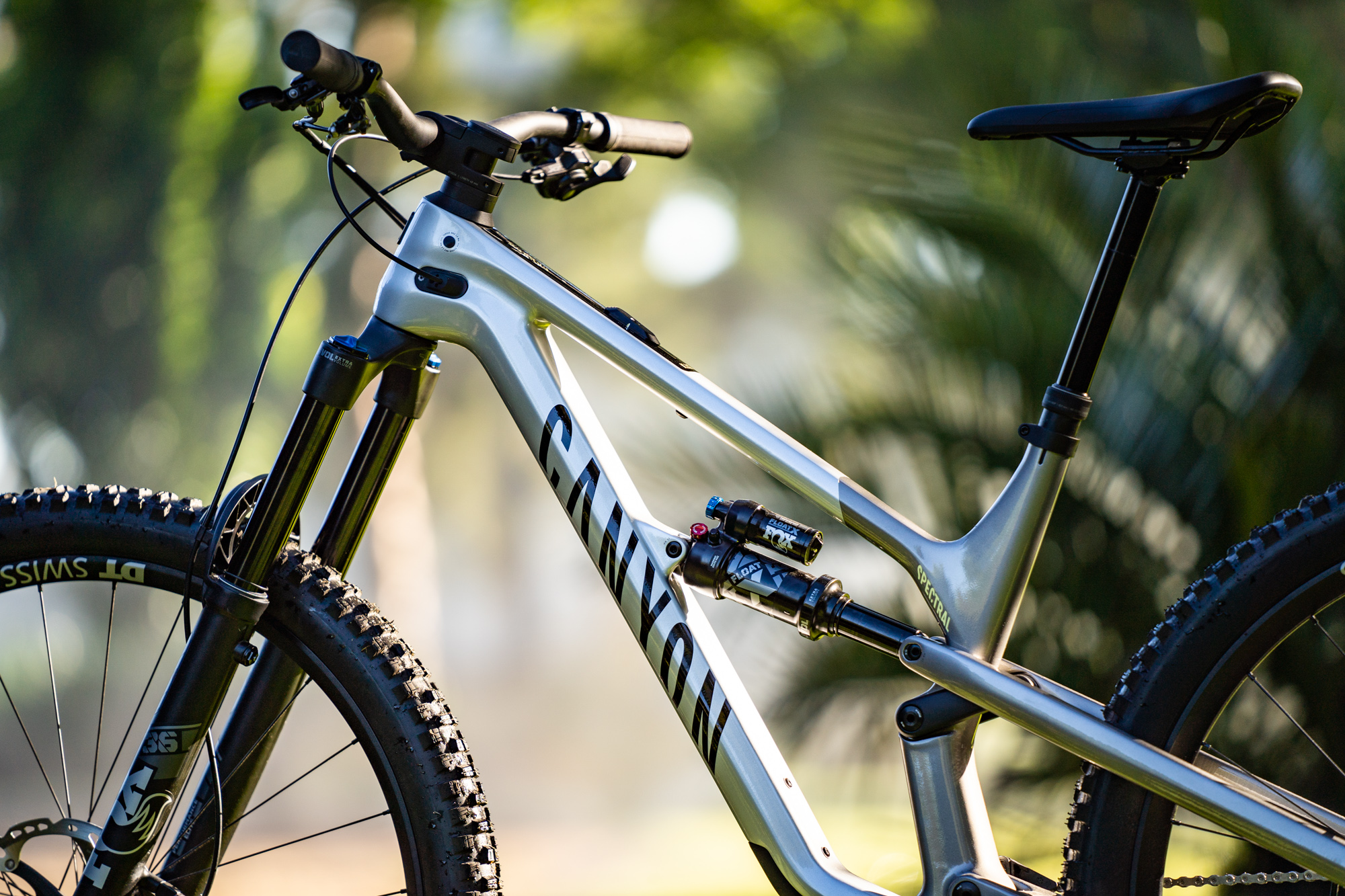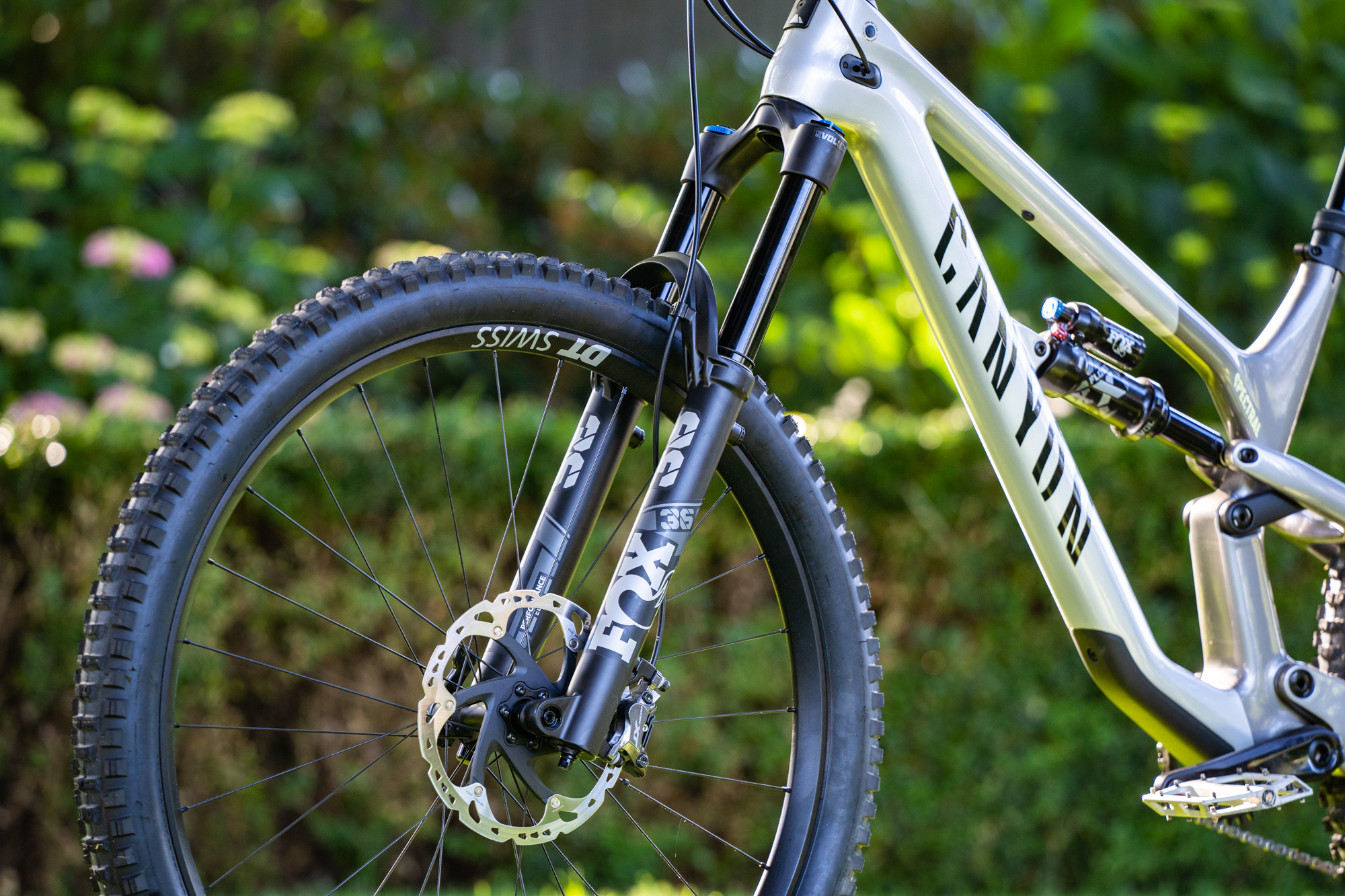Jack reviews the Canyon KIS system
Last year Canyon introduced the new KIS system. The original concept was developed and licensed by Jo Klieber of Syntace and Liteville, and it’s claimed to offer big benefits to your bike’s handling. In fact, Canyon’s engineers were so impressed with the on-trail results that they managed to secure a 12-month exclusive on the technology. The Spectral CF 8 is first bike to feature KIS system, but the German brand has indicated it’ll be rolling it out to many more models in the near future.
So is this the best invention since the dropper post, like Canyon claim? We got our hands on a test bike back in December, and we’ve spent the last six months putting it through the grinder across a wide variety of terrain to get a deeper understanding of how it works, and to find out if this really is the future of mountain bike steering.
Watch our Canyon Spectral CF 8 KIS video review here:
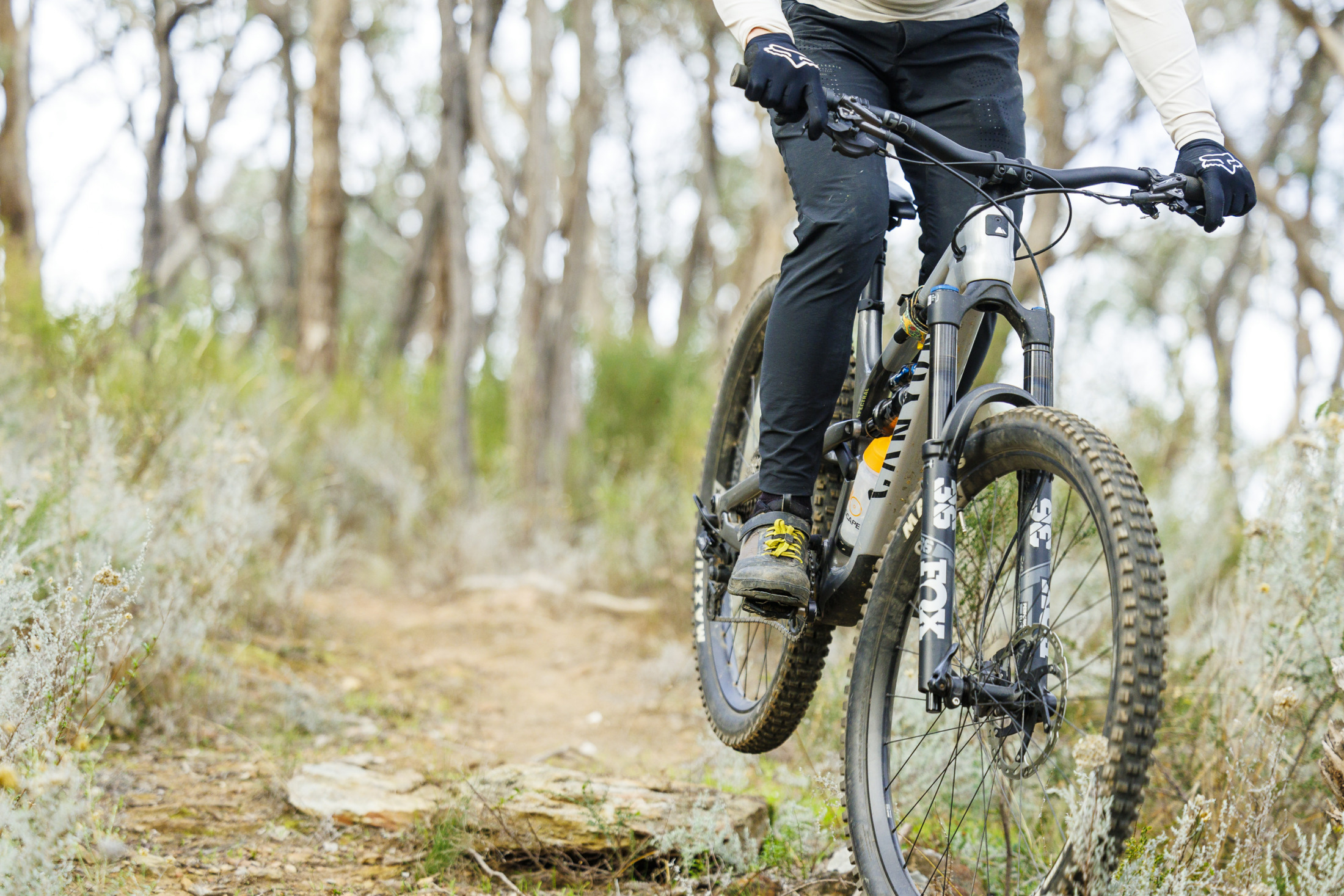
An overview of the Canyon KIS system
Standing for ‘Keep It Stable’, the Canyon KIS system is a mechanical steering stabiliser. The main anchor point sits inside the frame’s top tube, and that’s connected via stainless steel springs and high-stretch polymer cord to a specially designed cam on the fork steerer.
At rest, the springs hold the front wheel in the centre position. As you turn the handlebar left or right, the springs begin to stretch, and a counter-force is applied. This helps to bring the front wheel back to the centre position.
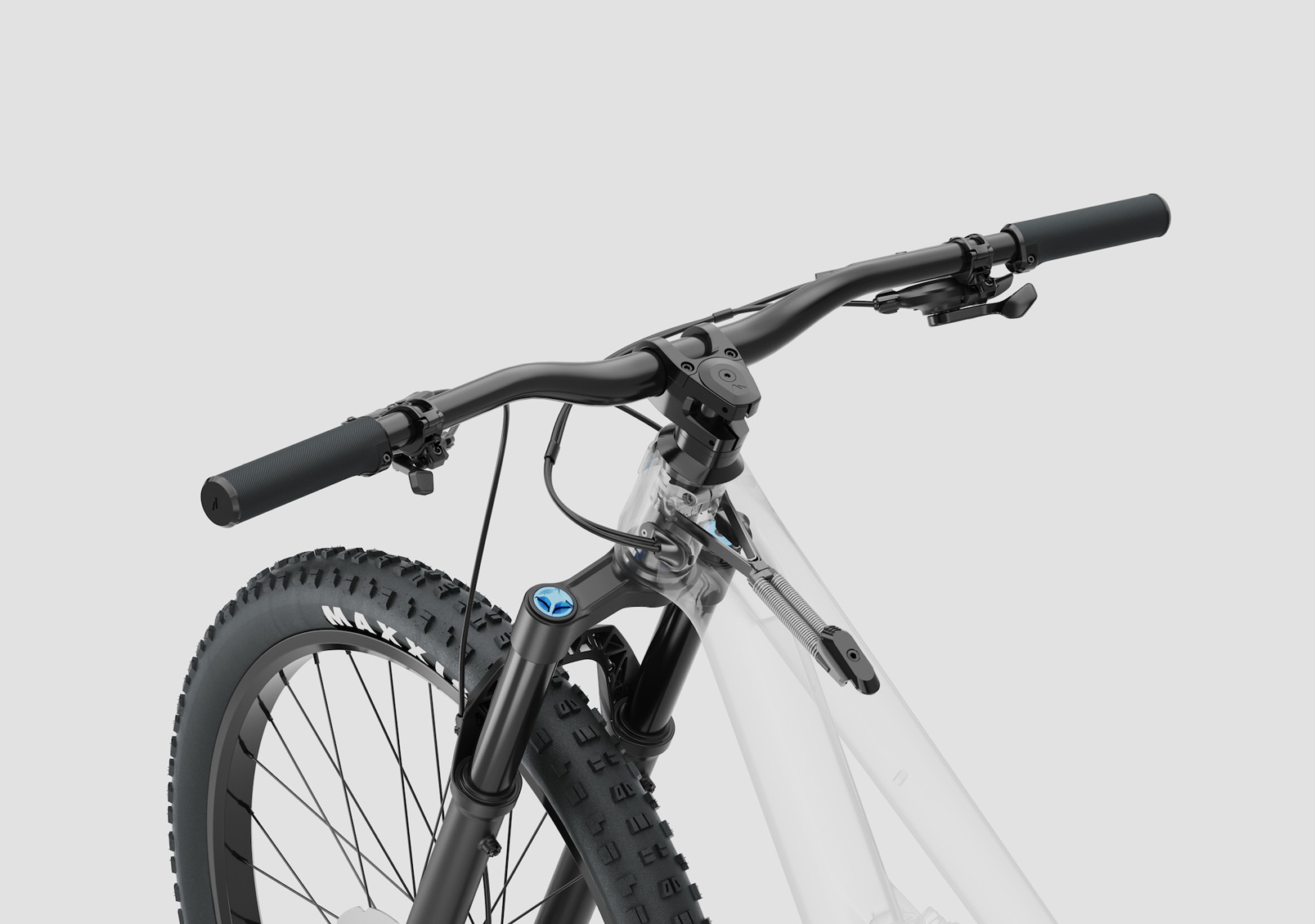
You can adjust the spring’s tension via the top tube slider, which increases or decreases the counter force. There is also a steering limiter that’s built in to the system to prevent over-rotation of the bars and potential damage to the internal components.
There’s a fair bit of theory behind what this widget is designed to do, and you can find a deeper dive into the details in our Canyon KIS first look article.
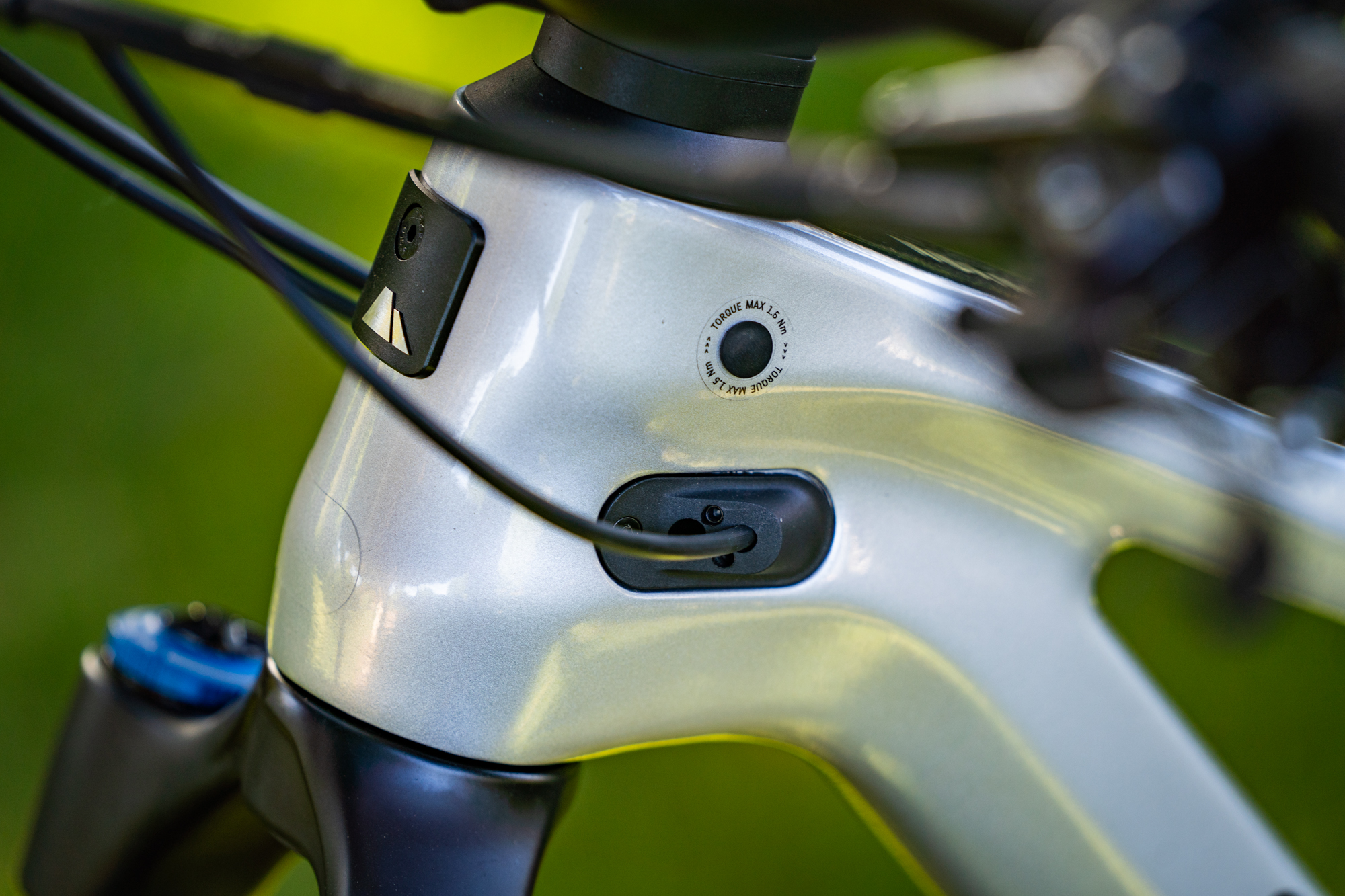
Canyon KIS price & specs
Currently the Canyon Spectral CF 8 KIS is the only model from the German brand to feature the steering stabiliser. It sells for $7,399 AUD (plus shipping), which is a $700 AUD premium over the regular Spectral CF 8 model.
The geometry and spec are identical between the two bikes, with the only difference being a purpose-built frame that features a hole in the top tube and in the head tube that provides you with access to the mounts and slide adjuster.
The packaging is discreet, and you wouldn’t know it was there unless you knew what you were looking for. According to Canyon the entire system weighs just 110g, and it’s claimed to be maintenance-free.
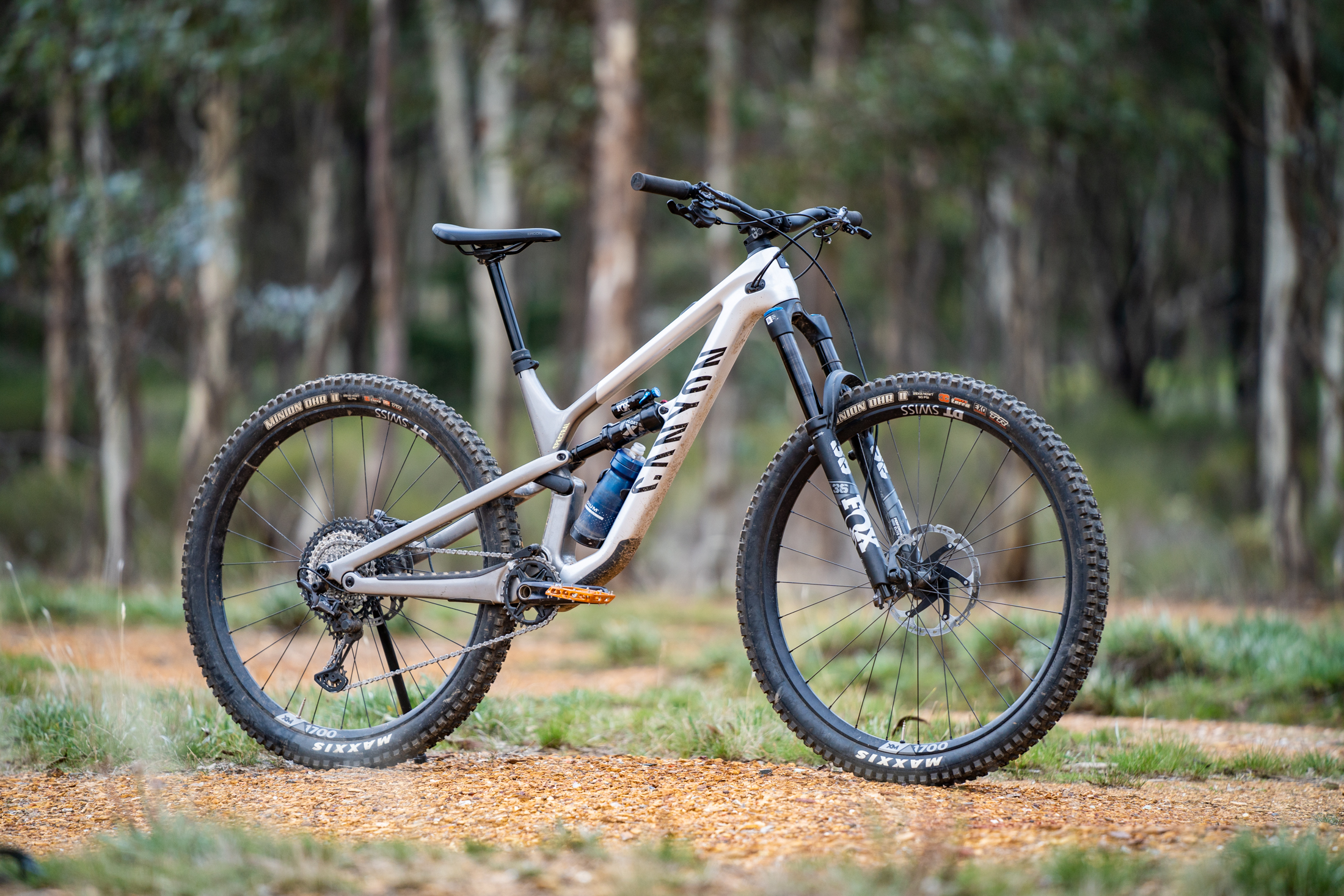
2023 Canyon Spectral CF 8 KIS
- Frame | CF Carbon, Four-Bar Suspension Design, 150mm Travel
- Fork | Fox 36, Performance Elite, GRIP2 Damper, 44mm Offset, 160mm Travel
- Shock | Fox Float X, Performance Elite, 230×60mm
- Wheels | DT Swiss XM 1700, Alloy Rims, 30mm Inner Width
- Tyres | Maxxis Minion DHR II EXO 3C MaxxTerra 2.4in Front & Rear
- Drivetrain | Shimano XT 1×12 w/30T Crankset & 10-51T Cassette
- Brakes | Shimano XT 4-Piston w/203mm Rotors
- Bar | Canyon G5 Riser Bar, 30mm Rise, 780mm Width
- Stem | Canyon G5, 40mm Length
- Seatpost | Canyon G5 Adjustable Dropper, 30.9mm Diameter, Travel: 150mm (S), 170mm (M), 200mm (L-XL)
- RRP | $7,399 AUD (plus shipping)
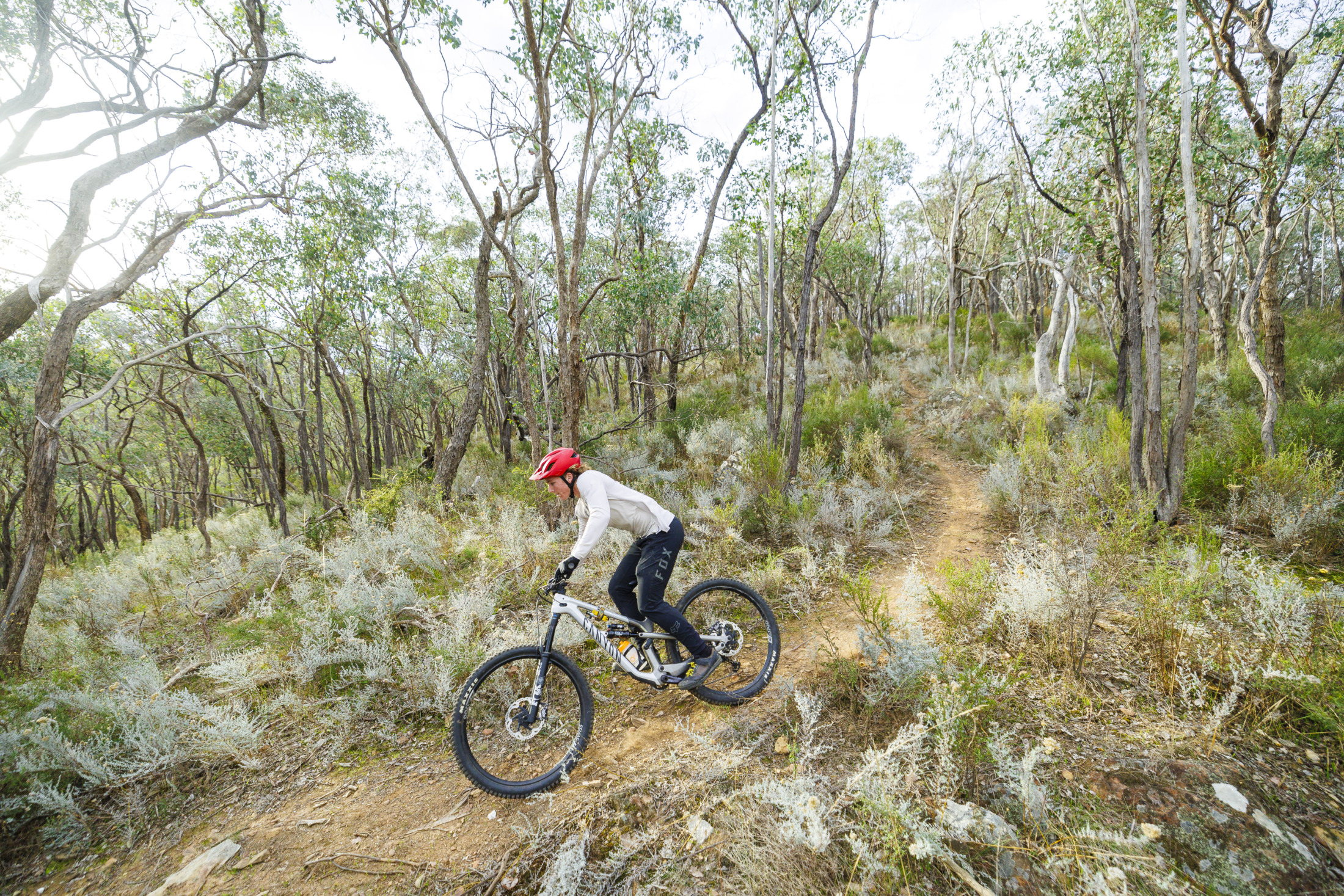
Testing the Canyon KIS system
We were originally invited to test out the Canyon KIS system in the Austrian alps as part of the official launch. As wonderful as that sounded, we realised that testing a new steering stabiliser on unfamiliar trails for a limited time while battling jet lag wouldn’t exactly give us a well-rounded experience. And looking around online at some of the first ride reviews that have come from the launch, it would appear we made the right decision.
Instead, we requested a bike fitted with the KIS system in order to test it out on familiar home terrain. We received the bike at the end of last year, and have spent the last six months riding it on a wide variety of trails to get a deeper understanding of how it works, and whether the claimed benefits really materialise in the real world.
Here we chat with our extremely fast, and exceedingly talented enduro tester Jack about his experience with the Canyon KIS system.

What were your impressions and expectations after first learning about the Canyon KIS system and reading some of the early reviews online?
My first thought on the system was why? What problem is this trying to solve? After looking a little into it and reading other reviews online, I thought Syntace and Canyon were addressing a problem that no one had. It seemed like just another complex part to break and have to replace.
It’s not the first system of its kind. Some brands in the past have experimented with a friction-based approach to slow down steering inputs and help with front wheel deflection. There are also the more moto-inspired damper designs, but they’re complex and heavy, so none of these systems seemed to have caught on.
Those assumptions aside, I was still keen to get my own riding impression of the Syntace/Canyon KIS system.

Tell us a bit about your first ride. Was the system noticeable? Did it feel strange?
The first ride was a little sketchy! I didn’t notice the system too much on the way to the trails and thought that maybe I wouldn’t feel much difference with it set on about ¼ preload. WRONG! I hit a jump at a pump track that I have done thousands of times and – all of a sudden – was a little too sideways. Whilst I rode it out, I was much more careful on jumps after that.
After I had gotten a little used to the system at the pump track, I decided it was time to take it to the trail. Whilst riding up the steep fire road to the top of the hill I noticed that I had almost no front-end flop. Usually on this climb you’re fighting with the bars to stop the front wheel from flopping side-to-side, but on the KIS system I was able to sit up and loosen my hands, and the bike would go straight up the hill.
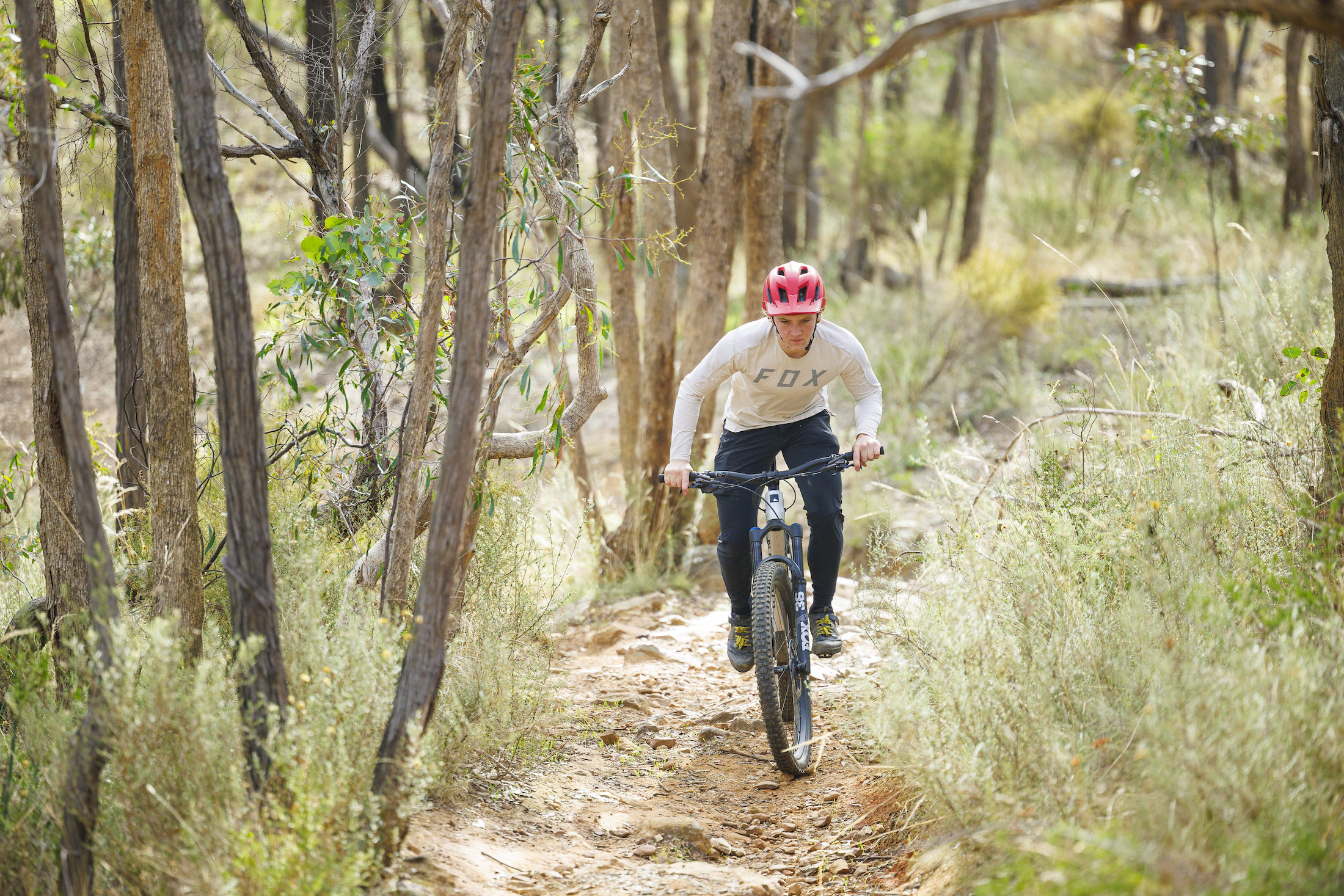
Now it was time to go back down. I chose a trail with a few loose corners but mostly fast straight sections. I got through the fast section without noticing too much difference, and it wasn’t until I got to the loose corners that I really noticed the system working.
As I got into the first corner, I dabbed my inside foot as the rear of the bike started to slide a bit. The same happened all through the trail. I was a little confused when I got to the bottom, thinking I may have pumped my rear tyre up too much, but it was fine. I went up to do the trail again. No difference, I was still sliding around the corners that I would usually take much faster without sliding.
On the next run I decided that I would try to stay clipped in whilst the bike slid and see what happened. I expected to see the rear wheel beside me just before I either slid out completely or got high-sided off the track, but neither happened. I hit all of the corners clipped in and felt mostly in control.
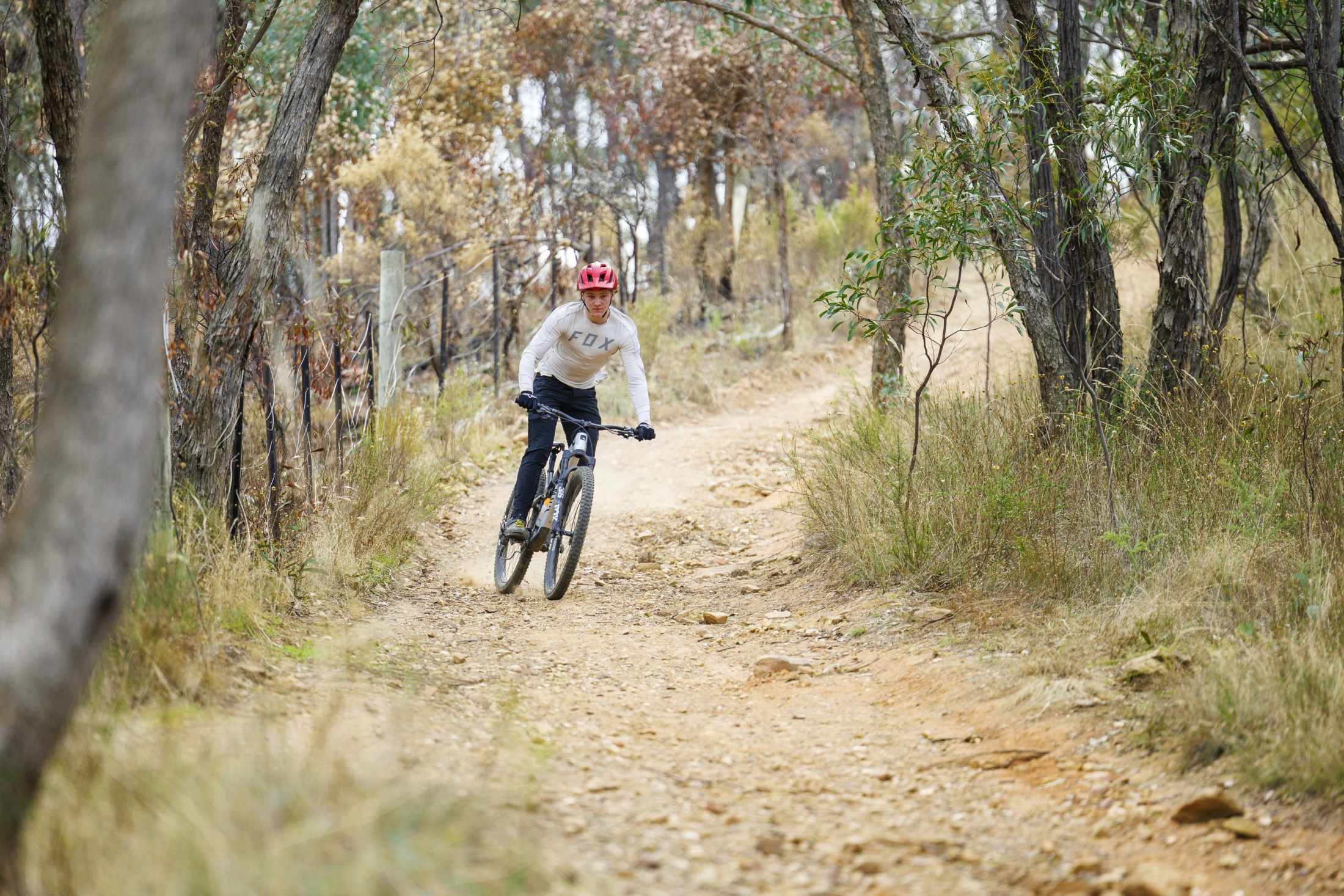
I realised that on loose surfaces you could control the rear of the bike more with your steering input and weighting of the bike. I spent the rest of this ride finding more loose corners to slide around. It was on this ride I found that the system acts quite simply once you realise what is going on. The rear wheel just tries to point the same way as the front whether you’re in the air or on a slippery surface.
What other bikes have you been riding while testing the Canyon Spectral KIS bike? Was it strange going back and forth between all of those bikes?
Whilst testing this bike I have also been riding my personal Trek Slash and Cotic BFeMAX hardtail as well as the new Merida One-Sixty. I found that switching between bikes was harder with the KIS system, as you need to keep in mind that on other bikes you cannot slide the rear end as much whilst still being in control. Towards the end of testing this bike, I was able to swap between the Spectral and my Slash for enduro races and not feel too weird. However, I did miss the extra control and riding style of the KIS system.
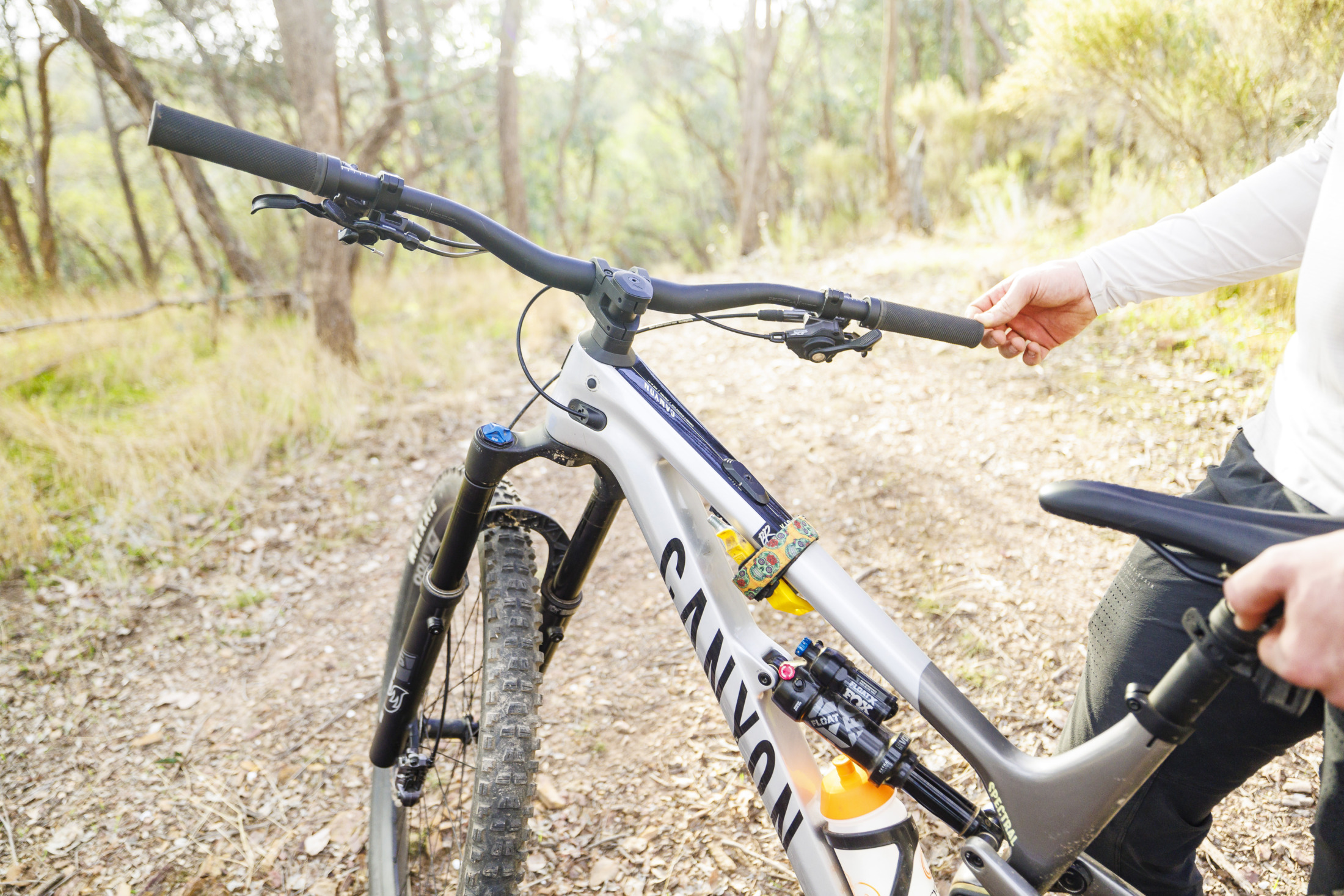
As you’ve gotten used to the system over time, how did your experience and understanding of the system evolve?
As I have ridden this system more I have found a few new uses for the system.
The first one is lifting the rear wheel yourself. When going around a tight corner on a normal bike you might grab a little front brake to help you lift the rear and pivot around the corner. With the KIS system you need to be careful about how much the spring is preloaded before you lift the wheel.
My first time doing this I almost slingshotted myself off the hill. I had the bars almost at full lock so when the rear wheel lifted into the air, it shot around me much quicker than I had expected.
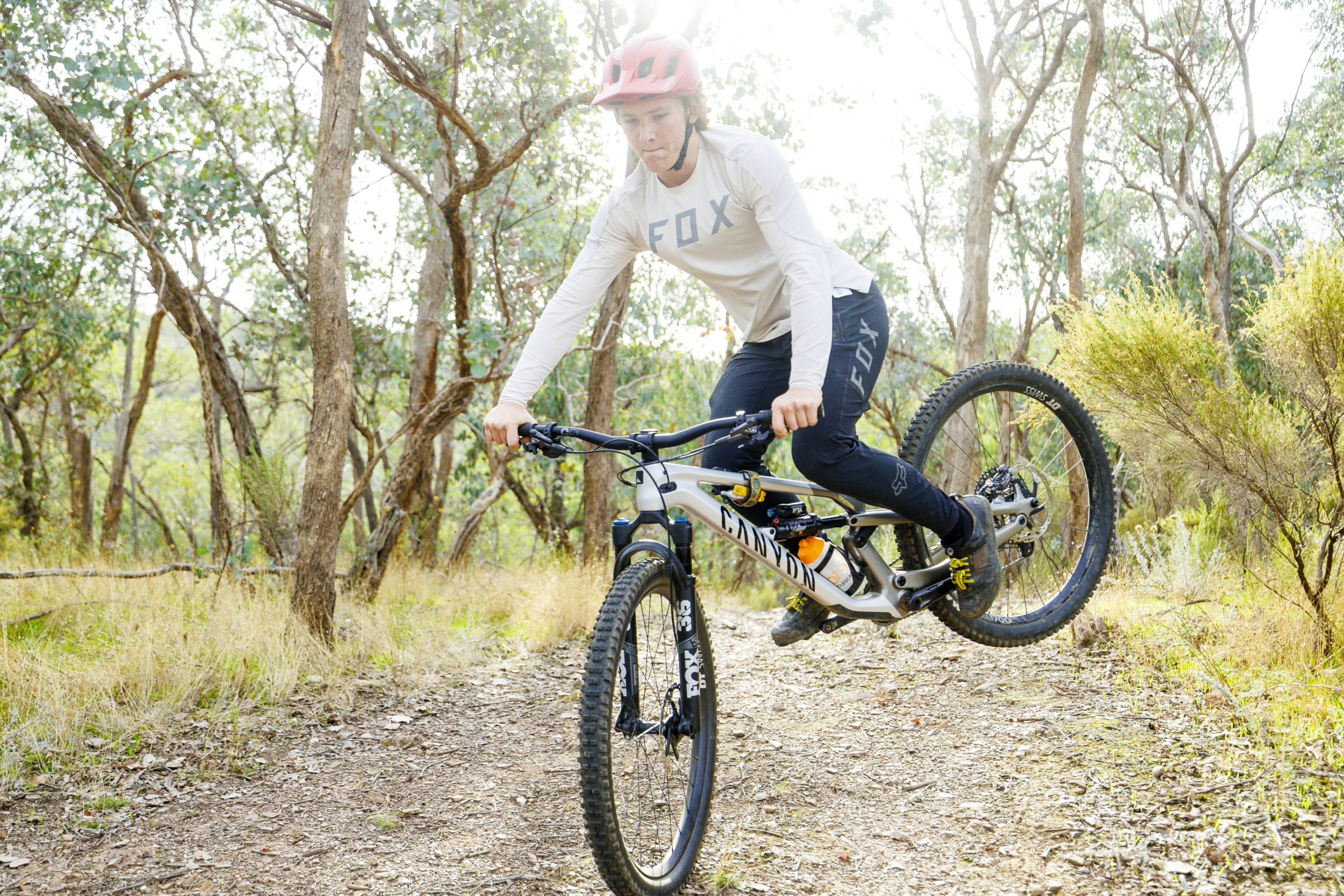
Another quirk of this system is that because the rear wheel slides in the corners, I found myself subconsciously leaning back to get more weight and traction to the tyre. However, this obviously unweights the front tyre, resulting in less grip and understeer. It took a while to adjust to this and get comfortable with the rear wheel sliding, and to make sure that I’m leaning forward in the corners to keep the front wheel gripping.
Have you played around with the adjuster? How does it impact the bike’s handling?
I’ve found the preload adjuster handy for use in different conditions. If it’s a bit slippery or loose I’ll back off the preload adjuster to about 1/3rd, but if the trail surface is grippy you can add more preload. By adjusting it to the conditions I found that the bike was more predictable and consistent.
I also found that if I planned on doing faster flow trails I could lessen the preload a bit to help the bike feel a little more natural and nimble in the air.
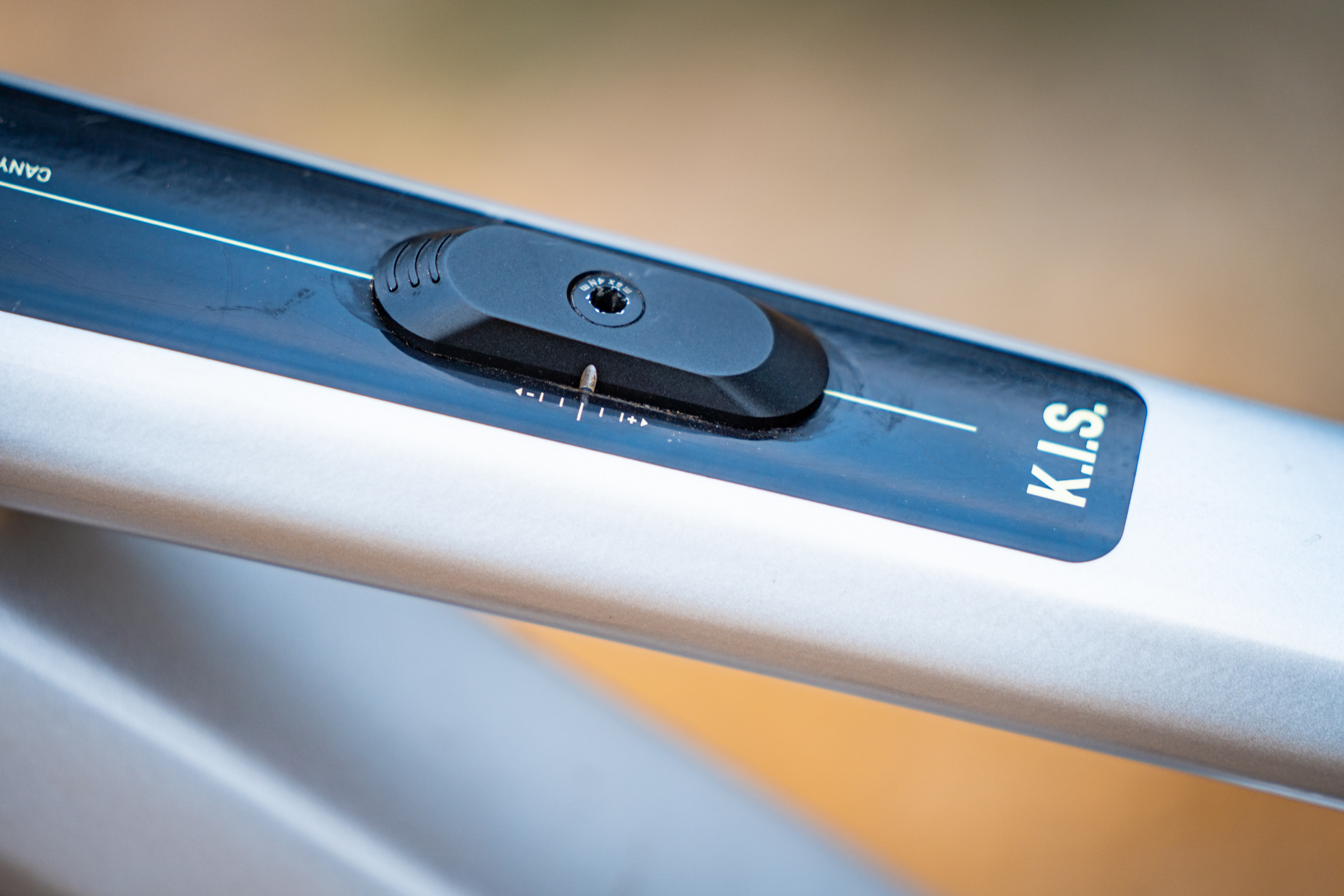
Are there any areas on the trail where it’s surprised you in a good way?
It surprised me more on the chunky trails where there may be loose rocks or slippery roots. When the wheel starts to slip or slide you notice that the rear wheel will make its way back straight eventually. This means you can be more confident riding those sketchy and off-camber sections, knowing that the rear wheel is following.
I also found that there was a noticeable increase in the control I had over the front wheel. The handlebars were less likely to get yanked from side-to-side, so I wasn’t being pinballed around when riding down rocky chutes.
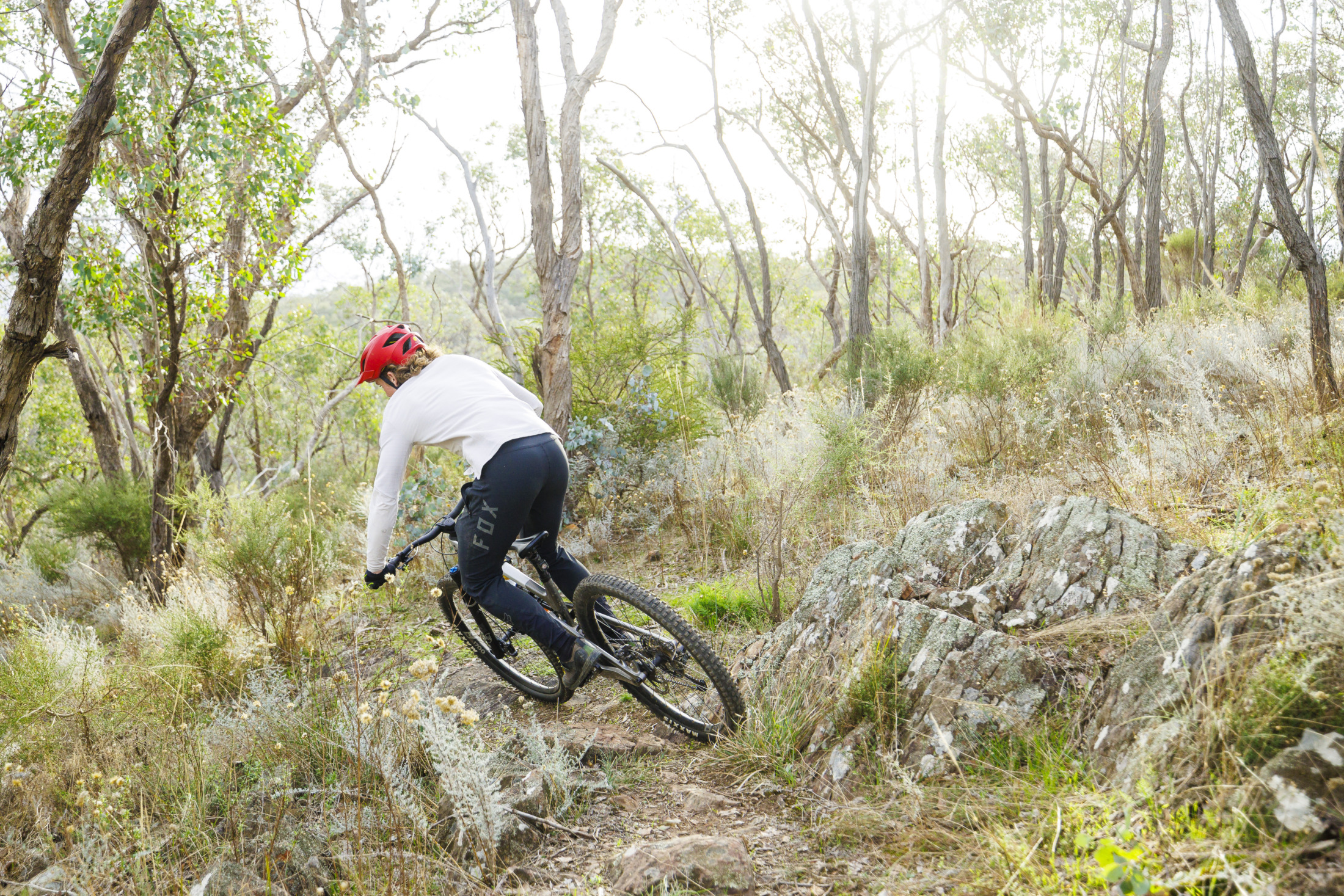
Have there been any bad surprises?
After I got used to the system it was quite predictable, but in the first few rides I was caught out a few times with the rear of the bike doing things that I didn’t expect.
One situation was a tight corner in a steep rock garden with a big step on the entry. Usually I would lift the rear wheel a little to pump down the other side of the rock and get more grip in the following corner. The first time on this bike I had my front wheel turned as I went into the corner, so as soon as I lifted my rear wheel it swung around beside me and I almost high-sided, which caused me to go off the trail. After this, I started to realise that instead of lifting the wheel to get the bike to turn more I could just let the KIS system do it instead and the rear would slide a bit to help me make the sharp corner.

If your Trek Slash came with the KIS system, would you still race enduro on it?
Definitely. I think that it can benefit racers more than most others. On the liaisons, you would use less energy and be more comfortable as you will not be fighting your raked-out front end from flopping around. But most of the advantage would come in when you are racing a trail you may have only ridden one or two times, where you often go into a blind corner a bit too quick or your rear wheel gets kicked off-line by a rock. I think in both of these situations the KIS system helps you to stay in control whilst still on the limit of your skill and speed.
Some of the early reviews weren’t particularly favourable of the KIS system. What’s your take on those reviews?
I agree that for the first few rides, the system is a bit hard to predict. But after spending a considerable amount of time on it, I believe that if given a bit more time and less swapping between bikes, most people would come around to it.
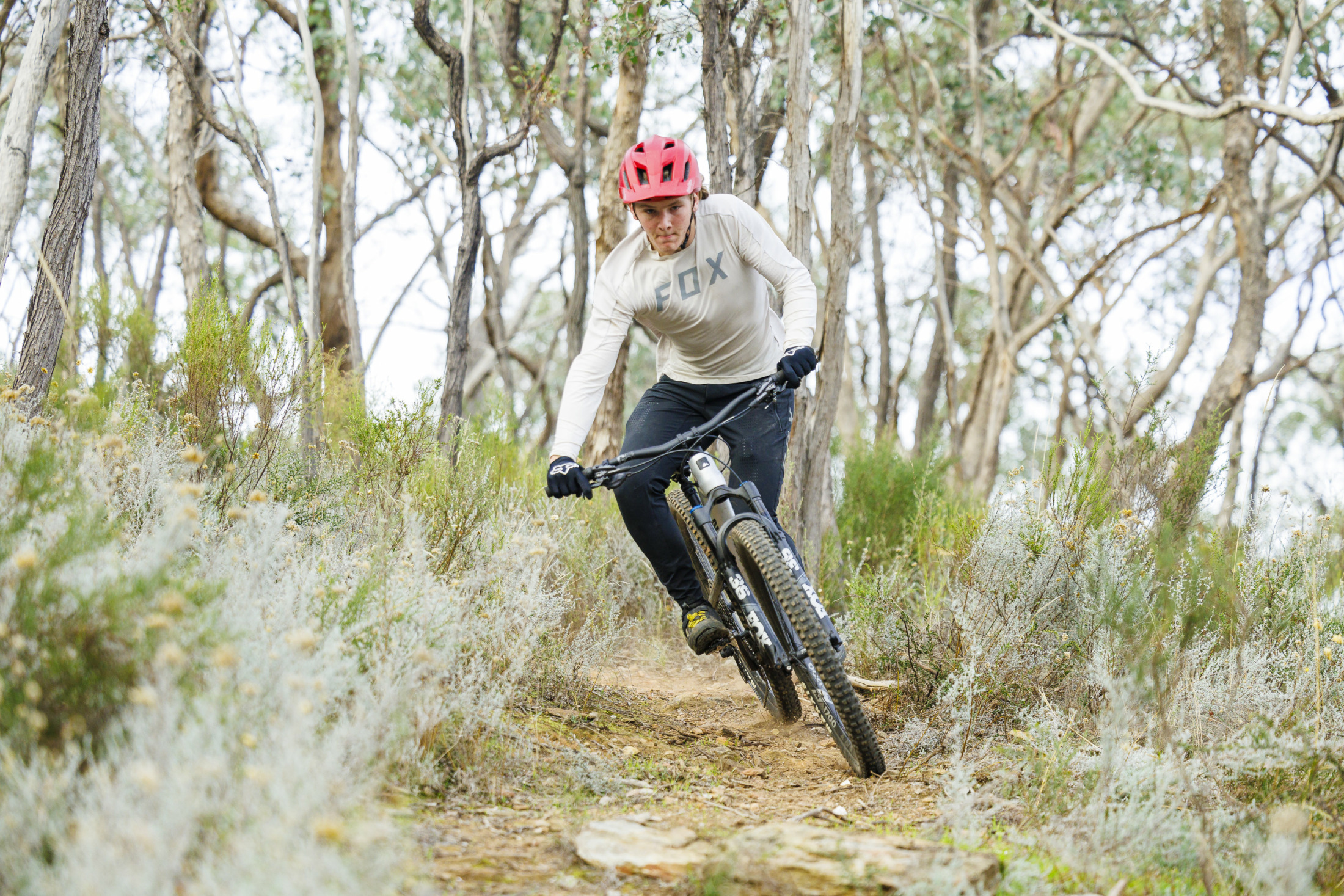
I do think that there is a little misinterpretation about the advantages of the system though. I have found that whilst it does help your steering stability slightly, which seems to be what a lot of the focus for the articles are, the main benefit I felt was in the way it applies force to the rear of the bike. It helps you around corners and minimises understeer by pivoting around the front wheel.
Canyon currently has a 12-month exclusive on the technology that will expire later this year. Do you think we’ll see other brands jumping on board?
I think we will see more brands using the KIS system for sure. However, I think that brands will continue to spec a few models in each range without it for the time being until this system becomes widely accepted in the MTB community. I do hope that the racers will make use of this system, which would make it more popular among amateur riders and weekend warriors.

What bikes do you think it would work well on?
It would work well on most bikes but I think it’s more useful on slacker and bigger travel bikes. This system could help to make bigger bikes more comfortable to climb on, but also more nimble through the corners.
I do think that it would suit a DH bike, where all-out speed and maximising control whilst on the very edge of traction is the whole focus.
I would also be interested to try it on an XC bike. Although weight is a big focus in XC racing, so is efficiency and saving energy. I see this system helping to guide the front end as you get more fatigued throughout a race.
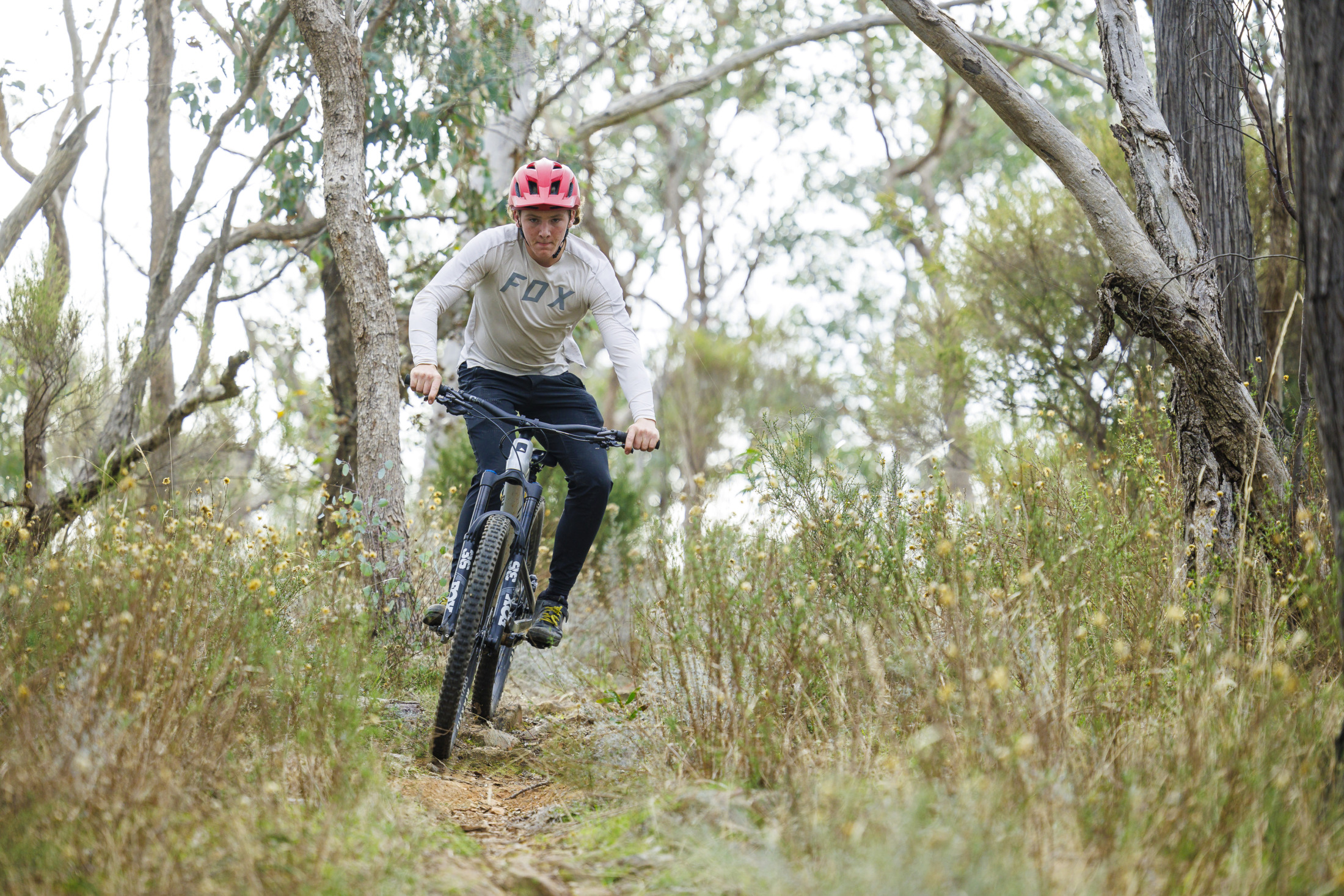
Flow’s Verdict
Despite our initial skepticism of the Canyon KIS system, we ended up being thoroughly impressed by its performance on the trail. It adds a new dimension to cornering, and the way it calms down steering flop presents some notable advantages.
It does add cost and complexity, and regardless of what we say, we expect plenty of you will still be left scratching your head and wondering if this is just a gimmick that’s attempting to solve a made-up problem.
Furthermore, it’s difficult to fully understand how it works and what it can do for your riding until you experience the Canyon KIS system first-hand. You also need a decent amount of trail time to adapt to it and learn how it behaves. Given you currently need to spend over $7K on a Spectral CF 8 KIS, that’s a gamble that few riders are likely to take.
With that in mind, we look forward to seeing this steering stabiliser adapted to a broader range of bikes and price points. And once Canyon’s 12-month exclusive expires, we suspect there’ll be other brands jumping on board. Whether it represents the future of mountain bike steering we’re not entirely sure, but the advantages are impossible to deny.
